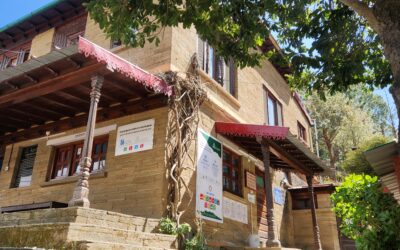The allure of Nizamuddin basti’s patterning of two polarities co-existing in the same space. The left is a sombre tone of white while the right is a jumble of vibrant rocks stacked in cement.
If it’s your first time in a Basti, the Nizamuddin Basti will surprise you. Squished between the posh localities of Nizamuddin East and West, lies this gallery of colourful houses, cradled by a flux of people – some here to eat, some to pray, some to love. I came here for all three.
As someone with the diet of a deer, one isn’t left with a lot of choices in a cuisine thriving on carefully cured meat. But there is always your sweet and fragrant Sheermal. The Dargah offers not-necessarily a calm environment but surely surreal sensations surface quietly while you’d be resting on the warm marble floor marvelling the delicately done walls and pillars. Perhaps, it could even be the most heavily thronged monuments in the Basti. To please your mental palate for places, there’s a variety actually. Many masjids, the Ghalib Academy, the Mazar of Ghalib, the Chausathkhamba, Barakhamba and I could go on but you get the idea
(Un)fortunately, courtesy the currently ongoing pandemic, most of these places are comfortably tranquil and empty. One such monument that I happened to completely miss despite proper signage was the Bawli (or Boali, if you please).

Picture Courtesy: Google Street View Hazrat Nizamuddin Aulia Bawli
The Bawli or the step-well is an intelligent marvel of architecture which helps the community built around it stay as inundated as possible, with whatever Delhi’s climate allows. The Bawli has become vestigial since we laid pipelines under the ground to flow our waters in and out.
If you quiz a few basti dwellers, they will tell you that the place sees a 24/7 supply of water. One such dweller went on to say, “My house is in Okhla, but the basti’s water is sweet & plenty and so I rent a shanty here.” To hear this as a Dilliwaala is like hearing – I have a patch of rainforest in the Thar desert – inconceivable but true? “Let’s find out!“, I said to myself.
I learnt that it was only a month ago that a few underground sewage pipes were renewed, and so I wondered how lucky could this “Basti” be? So what next? If the basti is blessed with bubbling waters, it must at least get logged when there’s a heavy downpour? A good half of Delhi imitates Mumbai during an intense fall of rainstorms. It’s not so much so a flood, but a geographically scaled water-logging situation. “The basti must get logged, right?” Nay, it doesn’t; or so I was informed by the locals I had met so far.
There’s a mesh of gullies in the basti, and one can spot an elaborately lined sewage system with equidistant manholes and consistent outlets for drainage coupled by a pipe leading out of the hypotenuse of the houses.

The “Immersion Session” as a part of the India fellow bootcamp was coming to an end and I had to be back to our training centre by an appropriate time to maybe enjoy a good sumptuous meal. It was getting late and I decided to head to the Barakhamba to just rest for a bit. There was a man, with a beckoning gaze and so I approached him for a conversation. “Aapke yahaan bhi meetha paani aata hoga?” (Your home must also have a good supply of clear water?), I asked. A pause. He answered, “Chura lete hain.” (They steal the water).
Perhaps, I had been asking the wrong questions until this point. Yes, the basti does see a 24/7 water supply but how many homes does it actually reach?
His insight offered a different, newer perspective. There is a certain social hierarchy in the basti, some sub-localities where the richer folk live, and some where the water is still not as easy to store. It isn’t a draught like situation, but neither is it the magical 24/7. There are old areas and there are new areas, or let me rephrase – there are areas where the drainage is proper, and there are areas where water gets logged and enters homes. I’ll reiterate, it’s not as contrasting as it comes off, but it’s neither as equal as I initially proposed.
You can give the basti an endless water supply, but sometimes, the clouded human intellect interferes. While water is one aspect of water supply, there’s more than just one dimension to any problem (or any opportunity, for that matter). I managed to mildly annoy the canteen in-charge, for I came back late for the supposed sumptuous meal that I had to have, but at least now I was eating food with my eyes open wider; realising that the flavour of my food comes from not just the masala, but with the effort of the chain of people required in getting it to my plate.
The basti offers a lot. A day can tell you enough stories but it will always remain incomplete, even if you decide to set camp in it until the next century. For now, it’s clear that if the water is plenty and flowing, nothing can stop it and it will eventually find a way to flow across any obstacles.




Very well written…full of quips and thought provoking sentences . Makes one want to go for a proper dilli darshan!
That is so very kind of you, Anandita! Can have a Janakpuri darshan at the least 😉
That is so very kind of you, Anandita! Can have a Janakpuri darshan at the least 😉